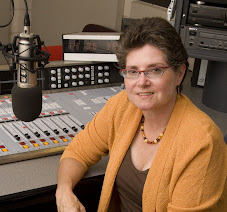This week on Lincoln Avenue, I’m talking with Brian Corbin, Executive Director of Catholic Charities Services and Health Affairs for the Roman Catholic Diocese of Youngstown, about the Ecumenical Coalition, a local effort spearheaded by area clergy to respond to the closings of steel mills that began 30 years ago. One of the leaders of the Ecumenical Coalition was Bishop James Malone, and Brian talks about Malone’s vision for the role of religious organizations in social and economic justice.
Next Wednesday, September 19, we will commemorate Black Monday, the day that the first of the major Youngstown mill closings was announced. The event is jointly-sponsored by the Center for Working-Class Studies, the Mahoning Valley Historical Society Young Leaders’ Advisory Board, YSU Center for Applied History, the Office of Social Action of the Diocese of Youngstown, and the Youngstown Historical Center (also known as the “steel museum”), our host for the evening. The event will include comments from four men who played key roles in the steel industry of the era, including fight to save the mills: William Farragher, who had worked in management at Youngstown Sheet and Tube; Gerald Dickey, a steelworker who also edited the Brier Hill Unionist, representing 1,500 workers at Sheet & Tube’s Brier Hill Works; the Reverend Ed Weisheimer, one of the clergy involved in the Ecumenical Coalition; and Attorney Staughton Lynd, who served as chief counsel to the Coalition.
Many people have asked me why we should remember Black Monday, suggesting that this community should stop holding on to its difficult history and focus on building a new kind of future. My answer has two parts. The first is simply that I believe that the present and future of this community will inevitably reflect its history, and if we want to create a different kind of future, we must recognize both the strengths and challenges of our past. That is, we must build on our history of hard work, strong community ties, and resilience, but we must also wrestle with our history of racial, class, and geographical divisions, of corruption and competition, and of relatively low levels of educational achievement. To build a stronger future, we must address these challenges.
At the same time, I think we should remember this history because it matters far beyond Youngstown. The ideas that were generated here went on to shape national positions of the Catholic Church, as Bishop Malone brought ideas from the Ecumenical Coalition to the US Council of Bishops as they wrote their historic Pastoral Letter on Catholic Social Teaching and the U.S. Economy in 1986. This community’s struggle also led to national legislation on plant closings, helping to protect workers in other areas. While those national outcomes may not affect the local community in concrete ways, they have helped to put Youngstown on the map not only as the poster child for deindustrialization (as John Russo and I wrote in Steeltown USA), but also as a community known for its persistent struggle for economic justice and survival.
